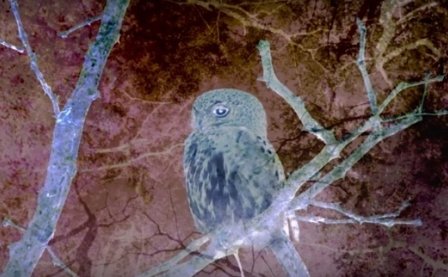One crucial aspect of abstract art is its ability to play with iterations of mass and lightness, and the fact that one can visually “fill in” the missing pieces of a textural field. Take, for example, the effect relaxed eyes have on a Mark Rothko painting, in which closely-valued hues become one gauzy sheen or, even more interestingly, the shaped canvases of Frank Stella’s early- to mid-60s work, in which cutaway sections volley between fullness and absence. The experience of Asa Osborne’s essentialist analog keyboard music as Zomes is an auditory variant of this phenomenon; as guitarist and instrumental architect for the Baltimore band Lungfish, he crafted dense and majestic music with a trance-like and often rhythmically complex imprint. Of course, Lungfish was given extra flesh not only by Daniel Higgs’ shamanic vocal incantations, but also the powerful drumming of Mitchell Feldstein and a series of bassists, most recently Sean Meadows (Boondoggle, June of 44).
Over the course of five proper releases and a split single with metal band Witch Hat, Zomes has reduced even further the essentialism of Lungfish into private meditations vis-à-vis home recording equipment, fuzzed-out organ, and canned rhythm. The paradox of this is that, far from seeming unfinished, Zomes’ music is the hot and primal core of what made Lungfish such a unique and powerful ensemble. Taking its name from geometric polyhedral modeling and often used in architecture, Zomes’ moniker is appropriate, holding an ideal form in conceptual space, whether sonic or structural.
Time Was is the most recent Zomes disc and offers quite a shift in methodology. It was recorded in a studio, relatively crisply and cleanly, and includes the voice of Hanna Olivegren, a Swedish singer who also works in the improvising ensemble Silence Blossoms and psychedelic pop outfit Hopes for Leo. While Olivegren’s pillowy and incisive vocals might initially seem like a far cry from Higgs’ seething declamations, there is actually quite a bit of textural similarity between the two, as she unspools breathy lullabies, wordless chatter, and mossy, garbled bits with sultry conviction. With the addition on some tracks of electric pianist/keyboardist Andy Hayleck and a plenum of multi-tracking, Time Was shifts Zomes into “full band” territory even though the vision remains quite singular. The opening “Loveful Heights” is a kingly processional, Olivegren bending husky and breathy tone into nattering cries atop the singular plod of electric piano, fuzz organ, and percussive effects. Following the drift of “Monk Bag,” the folksy lilt of “Silentium” emerges as a kernel of wails and pulsing electric waves, while “Little Lucid Dreamer” harks back to Zomes’ low-fidelity roots in a crotchety slice of gritty melody.
Zomes takes a curious cue from beatbox minimalism on the second side opener, “Footpaths,” which appropriates grungy downtempo hip-hop vibes into an isolated trance of cyclical refrains and gauzy vocals. “Equinox” presents a weighty holding pattern of delicately-paced organs and Olivegren’s distant coos, as though a locked groove had emerged somewhere amidst Terry Riley’s Persian Surgery Dervishes. It’s a restive pause before the groaning and creaky fuzz of the title composition, which is based on a torqued and toothy melody with multi-tracked vocal chants, and texturally could otherwise be an outtake from Lungfish’s Indivisible. The LP closes with “Cave Mountain Stream,” a terse yet blissful psychedelic head-bob lullaby for which Olivegren’s voice is beautifully suited.
For being as spare as it is, Zomes’ music is incredibly full while maintaining a hazy, idealistic distance. The mind’s ear grants orchestral majesty to delicate and simple cyclical melodies, thus granting the pieces a fascinating sense of play between mass and lightness or presence and absence. While perhaps less knotty than Lungfish, Zomes presents a vision of sound that, to quote late composer Bill Dixon, “[is] a cube-like thing, that if it were possible [one] could walk into the sound and play in it like that. It goes someplace and is a collection of something — why wouldn’t it have a width, height, while also having all the instruments on the same level? Let your ear select where it wants to go.”
More about: Zomes




